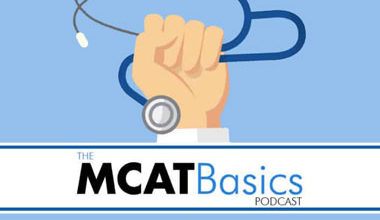Alex Starks talks about the different strategies and details on biosignaling tested on the AAMC MCAT exam. He dissects topics such as G Protein Coupled Receptors, Receptor Tyrosine, Kinase, voltage-gated ion channels, and much more!
- [01:23] What is Biosignaling?
- [02:23] Voltage-Gated Ion Channels
- [05:34] Ligand-Gated Ion Channels
- [08:54] Enzyme-Linked Receptors
- [13:30] The G-Protein Pathways
- [15:06] The Mechanisms in the G-Protein Pathway
- [19:01] Quiz Section
What is Biosignaling?
According to the AAMC content outline, biosignaling focuses on the structure and functions of the nervous and endocrine systems. This also encompasses the ways these systems work together to coordinate body responses towards external and internal stimuli. That said, today, we’re not going to cover all the different types of biosignals because science is yet to discover all the available biosignals. Secondly, most of the essential content material on biosignals will be covered in medical school. Still, the MCAT rewards students with a basic understanding of stimulus, internal processing, and response. So, it would be best if you at least grasped the basic concepts around the topics mentioned above.
Voltage-Gated Ion Channels
Voltage-gated ion channels are transmembrane proteins essential for electrical signaling in cells. The activities of these channels are regulated by the membrane potential of a cell, where open channels allow the movement of ions along an electrochemical gradient across cellular membranes. Voltage-gated ion channels can be classified as voltage-gated sodium, calcium, potassium, or chloride channels, depending on the ions conducted. A great example of electrical signaling of cells is an electric shock. Think about that time you stuck a knife into an outlet as a kid and got zapped. The action caused physical movement that forced a change in your body position.
The same principle applies to this scenario. When the channels get zapped, the action leads to a change in the electrical membrane around them. This action causes a change in the conformation and forms a channel that allows ions to pass through. However, the channels are intrinsically unique such that a sodium channel will not allow calcium ions to move through.
Ligand-Gated Ion Channels
Ligand-gated ion channels are integral transmembrane ion-channel proteins that open to allow ions to pass through the membrane in response to the binding of a chemical messenger. The ion channels are activated by a ligand which causes the channels to open and allow for the passage of ions through the membrane. However, this should not be confused with ionotropic receptors specific to the muscle.
A great example of this type of interaction is the cyclic works in muscle contraction. A neurotransmitter release occurs when an action potential travels down the motor neuron’s axon, resulting in altered permeability of the synaptic terminal membrane. On the opposite side of the synapse, acetylcholine then binds to the muscle fiber surface at special sites with large numbers of acetylcholine receptors. When this neurotransmitter binds to a receptor, it triggers a new nerve impulse on the muscle fiber membrane. Enough excitation in the muscle fiber membrane will cause muscle movement.
A common misconception and an excellent trap question for the MCAT is that calcium ions flow into the muscle when acetylcholine binds to the muscle fiber surface. Although calcium is present in the neuron, it really doesn’t leave or enter the muscle cell.
